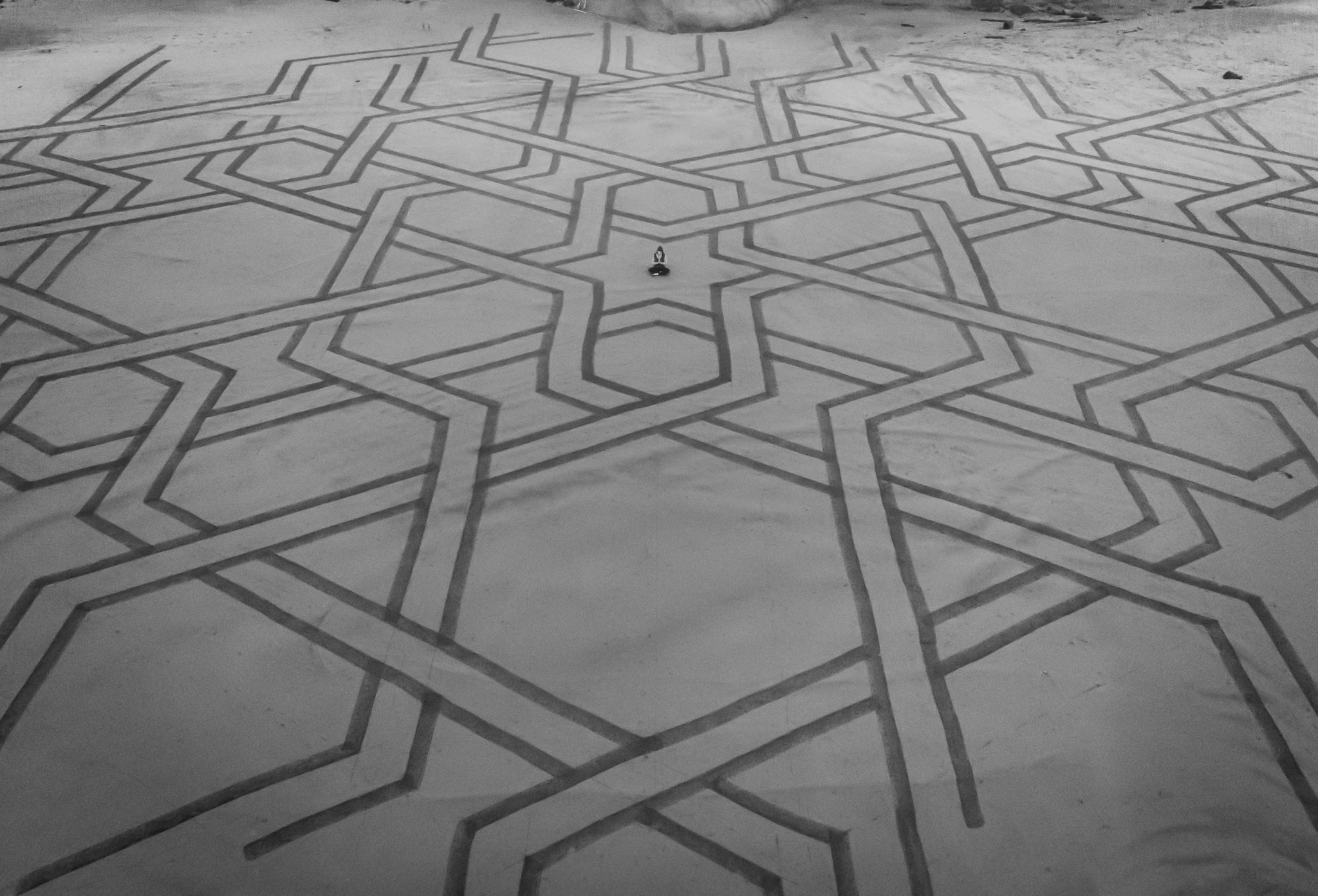This 'earthscape artist' creates ephemeral works of art in the sand

Nov 2, 2020 • 2 min read

The "Coordinated Chaos" series is one of Andres' favourites to work on, since he uses randomization to determine how various elements will interact in the final design — making the result a mystery until the very end © Andres Amador
Most people who have been to a beach have probably spent some time doodling in the sand, either a heart or a name or a big S.O.S. sign just for the fun of it. What’s certain, though, is that there’s a big difference between those doodles and the sprawling sand graffiti that this California-based artist creates.
California has opened miles of hiking and biking trails to the public
Andres Amador is what he calls an “Earthscape artist,” meaning that he uses “natural materials to engage the landscape.” With a rake as his main tool, he brings to life large-scale geometric patterns and designs on the beaches of Northern California and the rest of the world.

His works, which can span over 100,000 feet (more or less 35,000 sq meters), are “geometry in action” – they expand by principles of growth and almost become their own entities. And no two pieces are the same, just like Andres tells Lonely Planet.
“Each [one] is unique in the steps needed to realize it. The designs are inspired by a wide range of sources [like] nature, the human-built landscape or cultural designs,” he explains. “Sometimes I start with an already existing pattern – such as cracks in mud – and other times I develop a new technique for creating at the large scale and then new designs emerge while exploring that.”

This mix of planning and spur-of-the-moment creation is also why Andres has a very specific type of beach he likes to work on. “My ideal location has features I can interact with – boulders or spurs of a mountainside.” And he also adds that, understandably, he prefers beaches that are isolated from populated areas.

Andres’ work is ephemeral by its very nature. Once the high tide comes in, his patterns are washed away for good – something that he has learned to accept. “Ultimately, when [a piece] is finished, I let it go,” he writes on his website. “For me, the energy and draw [are] around the act of creation.”

If you’d like to know more about Andres Amador and his work, you can check out his official website here, where you can also find a link to the social media channels he uses.
You might also like:
California's iconic Joshua trees might be declared endangered in an effort to protect them
Cornwall's latest glamping pop-up site is right on the sand






